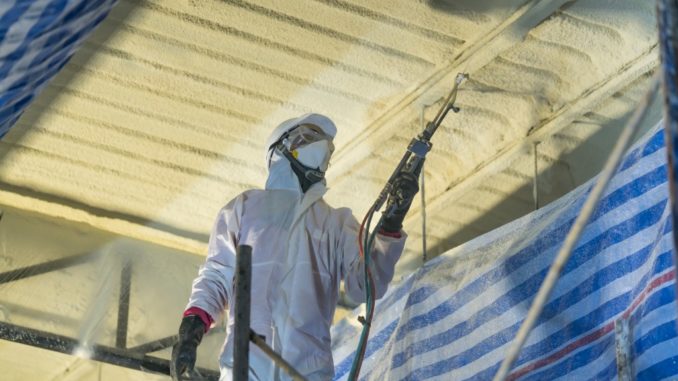
Even though technology and eco-conscious companies made it significantly safer for construction employees to work with building materials, it is worth taking note that many still fall victim to hazardous construction materials and unsafe job sites. Workmen involved in the construction process, as well as occupants of the building, may have their health compromised during the construction, maintenance, demolition, and refurbishment phases.
Choosing the right construction materials such as HPL panels is important for the protection of the workers and the building’s occupants. Unfortunately, some construction companies are still unaware of the dangers posed by certain building materials such as particleboard, medium-density fibreboard, and plywood. Studies have already shown that these types of wood can emit formaldehyde as off-gas because of the adhesive used during the manufacturing process.
Formaldehyde is a probable carcinogen, but its most popular health impacts are watery eyes and respiratory problems.
Stone
The silica content of stone and the quartz content of granite have the potential of causing a disease known as silicosis, where breathing becomes laboured. Oxygen will fail to enter the tissue, overburdening the heart to fail. This is particularly harmful to construction workers and masons who inhale the dust from blasting these construction materials. The excessive inhalation of stone dust, for example, can impede breathing and eventually increase the probability of lung cancer.
Slate
This is also rich in silica that can cause silicosis. This is a particular problem to workers who are tasked to split slate or engrave on it. The dust particles produced by blasting the slate or cutting it pose serious health problems to the workers. For the occupants of the building, slate in the form of tiles and slabs is not harmful.
Concrete

Cement houses chromium ion, which elicits dermatitis in low concentrations. It can penetrate and irritate the skin. On its own, chromium is also potentially carcinogenic if inhaled. It can enter the body either through the lungs or the digestive tract (small percentage). Chromium stays in the lungs for several years and could cause lung cancer.
Clay
Clay products are generally safe for construction workers and the occupants of a building. It is in the manufacturing process that clay materials become a problem. Clay products are used for decorative purposes, roofs, floor tiles, and sanitary piping. Like stone, clay also produces crystalline silica when fired. This by-product is potentially hazardous.
Vermiculite
Every homeowner knows the importance of proper insulation, and vermiculite is used for the thermal insulation between joists. But some vermiculite contains a small percentage of asbestos, which has already been banned in the construction of living and working spaces because of its potential to cause lung cancer.
Asbestos
The presence of the fibrous form of serpentine and amphibole minerals is the reason asbestos is largely banned as a construction material. It increases the risk of asbestosis, mesothelioma, and cancer. Many new construction materials have been developed to act as an alternative to asbestos.

If you are working in the construction or mining industries, take a look at the safety precautions being taken by the company to protect its workers. Follow the proper sanitary and safety procedures. Not only should you be looking out for yourself against possible physical harm the construction work can cause, but you must also protect yourself from non-physical but hazardous diseases that building materials can trigger.
